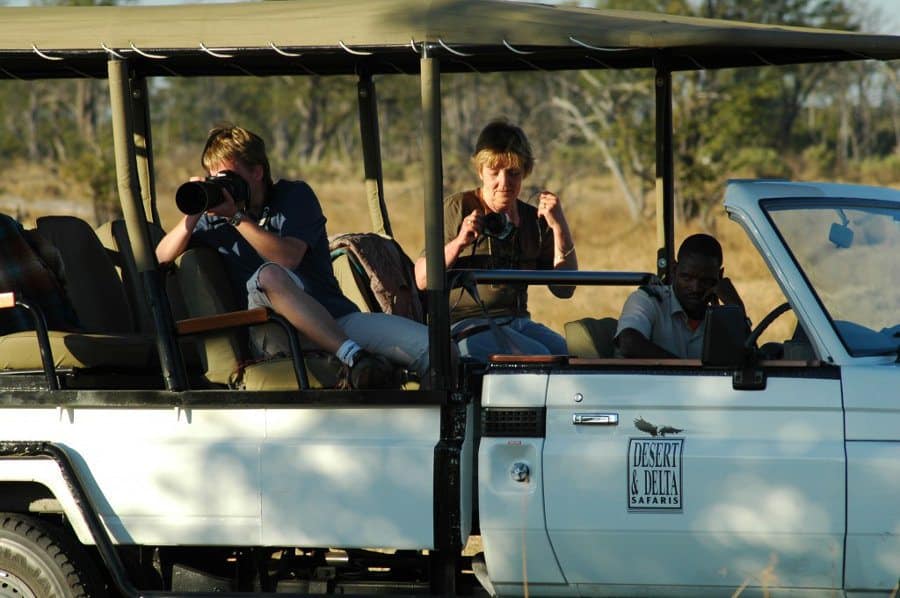Are you looking for the best cameras for safari adventures in Africa?
Finding the right safari photography equipment allows you to capture those remarkable moments with ease.
While nothing beats seeing the stunning scenery and animals roaming around in person, a good-quality camera is a valuable item on a safari packing list.
Whether you want to take photos to reminisce or elevate your wildlife photography website, there are several things to consider when deciding on a camera.
This guide details essential criteria for choosing the best safari camera for your budget and personal preferences.
How to Choose the Best Camera For African Safaris
Here are the top things to consider when looking at safari cameras.
1. What are the objectives of your stay?
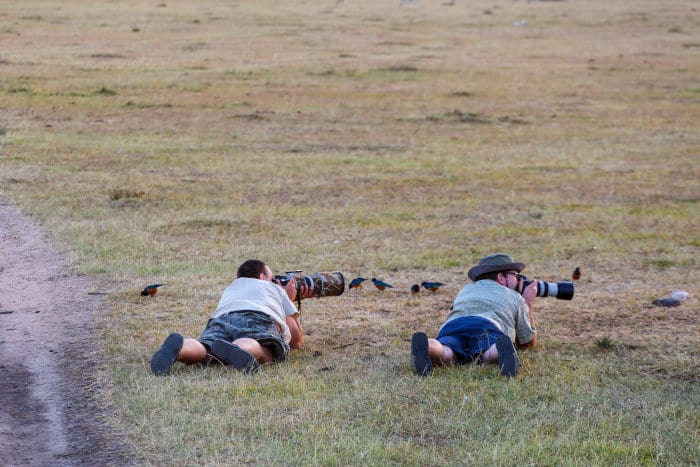
In other words, what is the purpose of your safari?
Are you out and about just to have a good time, relax and enjoy nature, or do you consider yourself a “serious” photographer looking for the “best” possible shots?
By defining clear goals and knowing what you’re after, you’ll be able to choose the adequate camera equipment easily.
2. Price
It’s important to decide on a budget that you want to allocate to your safari photography equipment. This will depend on the objectives of your stay, as the price you put in will affect the overall quality of your shots.
There are pros and cons to different types of camera equipment, and it would depend on the photographer’s skills too.
Generally speaking, buying a compact digital camera is by far the cheaper option and perhaps also the better one for the majority of amateur photographers. In this case, prices range from $50-$500+.
However, if you’re a connoisseur, you may want to choose more expensive and, overall, higher-quality camera equipment.
DSLR cameras range from $300-$2000+, and camera lenses are often bought separately.
Expect to pay anything between $200 and $7000+ extra depending on lens type, performance, and precision (aperture quality is key).
3. Type of camera

Are you more of a scenery fan, or do you enjoy capturing animal photography, portraits, and close-ups? Your interests and budget will affect the type of camera that you might be interested in.
The best camera options for safari photography include:
- Compact digital cameras
- DSLR cameras
- Mirrorless cameras
- Superzoom cameras
- Smartphones
Smaller camera models (compact digital cameras) are usually the best buy for the general public. They are very easy to use, lightweight, and feature a variety of different zoom lengths, from wide-angle to super zoom.
The major downside of compact digital cameras is that they don’t accept interchangeable lenses (although some models can use add-on converter lenses).
The best alternative to compact cameras is DSLR (Digital Single Lens Reflex) photography. DSLR cameras are excellent for both landscapes and close-up photography. All you need to do is change your lens accordingly.
Use wide angles (18-35 mm) for picturesque photographs and super zoom lenses for animal portraits and close-ups. 18-200 mm usually does the trick, or try 28-300 mm for best results.
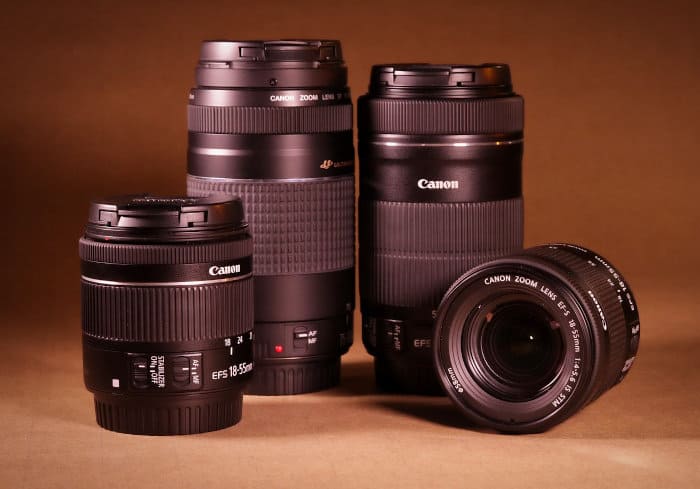
Both DSLR and mirrorless cameras have larger sensors. The improved low-light performance allows you to take breathtaking safari photos.
When comparing these two options, DSLR offers enhanced low-light shooting, a longer battery life, and a broader selection of interchangeable lenses.
Mirrorless cameras are great if you want a lighter and more portable option. It also offers fantastic video quality, and you can shoot at faster speeds – so keep an eye out for a cheetah running in the savannah.
A superzoom camera is another popular option for safari photography. It’s larger than compact cameras, and can’t fit in your pocket, so be sure to bring a camera bag or holder along.
Superzoom cameras are a great value-for-money option. It usually has big zoom lenses to take photos of far-away subjects. However, there can be motion blur when capturing shots of wildlife running in the distance.
For those searching for the best superzoom camera for safari, the Panasonic Lumix FZ80 and Sony RX10 IV are excellent picks.
Taking photos on your smartphone is a good alternative if you’re not in the mood to carry extra equipment. Its small size and lightweight build allow you to keep it in your pocket and easily snap a shot.
However, you’re likely to have poorer image quality and limited functionality than the above-mentioned options.
4. Weight
When selecting the best camera for safari and wildlife experiences, it’s essential to think about how much weight you can allow for camera equipment in your safari luggage.
Bear in mind that while compact digital cameras are usually lightweight (100-500 g), some DSLR equipment can be extremely heavy.
For instance, certain types of super zoom lenses can weigh between 2 and 5 kg alone (plus add another 600 to 1200 g for the body).
While a lightweight camera provides convenience, it may come at the cost of some functionality. That said, it’s best to find a balance between your preferred image quality and weight.
Note that digital camera accessories are not only heavy but are also much larger in size and thus take up a lot more space. So carrying them around can be a challenge.
5. Ease of use

When it comes to ease of use, not all cameras are equal. As most of us are familiar with smartphones, these will likely be the easiest to operate.
On the other hand, DSLR and mirrorless cameras require time to learn their settings and how it works.
Images shot on a smartphone can sometimes appear better than ones taken on a DSLR or mirrorless camera. However, this can be a result of an inexperienced user.
For a point-and-shoot experience, opt for a smartphone or compact camera. If you’re willing to put in the hours, a DSLR or mirrorless is worth the practice time.
6. Camera lens for safari
For awe-inspiring shots of the animals in Africa, it’s good to have a lens that allows for close-ups. As Africa is home to outstanding landscapes and sunsets, you should also consider a wide-angle lens. However, the increase in width comes with less zoom.
Long-length lenses of around 135mm and up are excellent for close-ups, while short-length ones that are less than 50mm are better for capturing landscapes.
If you want the best of both, opt for multiple lenses, you’ll get a wide angle and a sufficient zoom length.
Wondering, “what is the best canon lens for safari?” There are several options for every budget.
Canon EF 70-200mm f/2.8L IS III USM is a superb pick, and if you want a more affordable lens, check out the Canon EF 70-200mm f/4 IS USM.
7. Sensor size
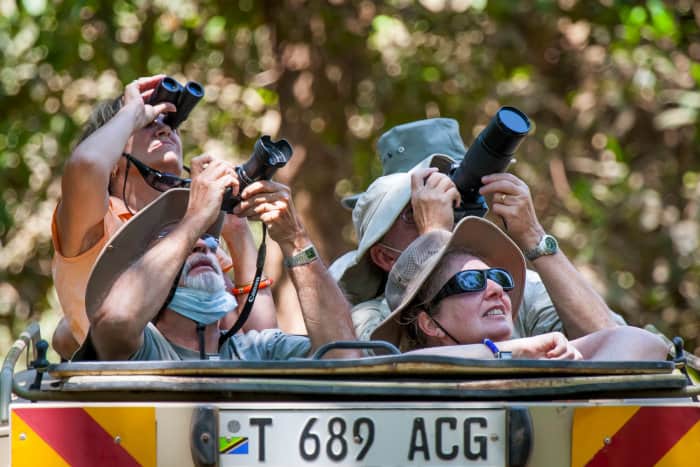
The sensor is an important factor to consider, as it significantly influences the photo quality. It records the light and creates a digital image.
Sensor sizes range from around 5.76mm x 4.29mm to 36mm x 24mm. Typically, the size of the sensor will impact the camera and lens size.
Smartphones and compact cameras generally feature smaller sensors, while DSLR and mirrorless cameras have bigger ones.
With larger sensors, you can capture more light. Thus, it performs better in low-light conditions.
So, what’s the catch? Larger sensors are often pricey, and you’ll likely find them in high-end cameras.
8. Camera brands
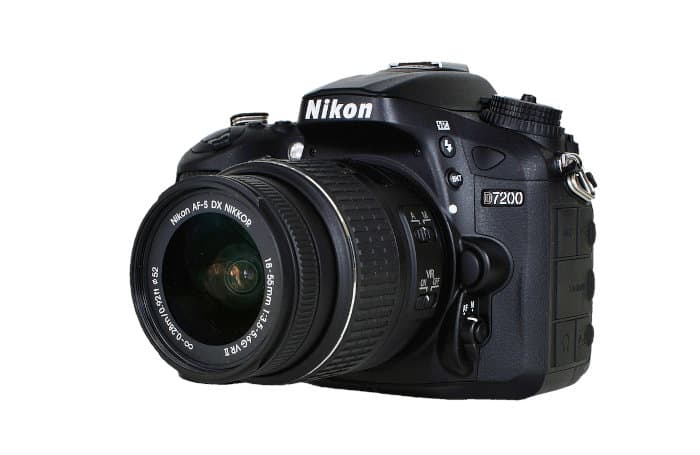
For compact digital cameras, the market is extremely competitive, and most models give you similar options and quality products.
To keep it safe, though, any of the following camera brands should give you great satisfaction: Pentax, Canon, Olympus, Sony, Nikon, Panasonic, Leica, and FujiFilm.
When it comes to DSLR cameras, stick to the big guns; Nikon (the D3400 is top-notch equipment already, available from $499), Canon (EOS family), and alternatively, Sony.
Safari Photography Equipment List: Must-Have Camera Accessories
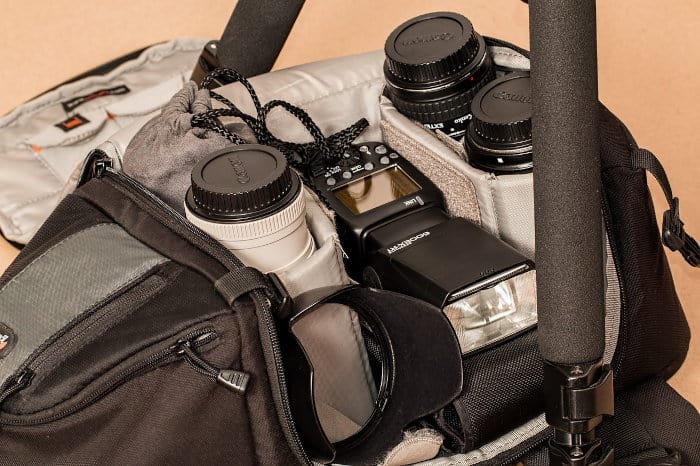
After choosing the best camera to take on safaris, you may want to pack accessories too. Here are a few handy items to bring along on your African safari:
- Spare batteries
- USB battery charger
- Memory cards
- A monopod or tripod
- Photography bean bag
- Digital image storage devices
- A camera bag
- A comfortable camera strap
- Waterproof bags
- Camera cleaning kit
Tip: If you don’t want to spend money on a tripod, a bean bag is a cost-effective alternative, especially for vehicle-based photography.
The Best Camera for African Safaris: Tips
Now that you know what to consider and which camera accessories to take with you as you venture out into the wild, here are a few more tips to get the best shots.
When it comes to stunning photographic opportunities, the early bird catches the worm. So don’t sleep on those gorgeous sunrise views.
Traveling just before sunset is also an excellent time to see animals during their active periods.
The golden hour occurs at the first hour after sunrise and the last hour before sunset. During this time, you can take advantage of the natural, even light that allows for mesmerizing photos with dreamy backdrops.
You can speak to fellow safari-goers to find out about the best photography spots in the area. If you’re a bit shy, have a look at some wildlife photography accounts on Instagram – you may even get some inspiration for your feed.
If you’re taking photos from your vehicle, be sure to turn it off to prevent unnecessary shaking.
When you’re exploring, keep an eye out for smaller African animals. You might spot an intriguing insect on the ground or a beautiful bird flying above you.
And finally, having lots of patience will help you capture the perfect shot and have a wonderful photography experience in Africa.
Capture Shots With the Best Camera for a Safari in Africa
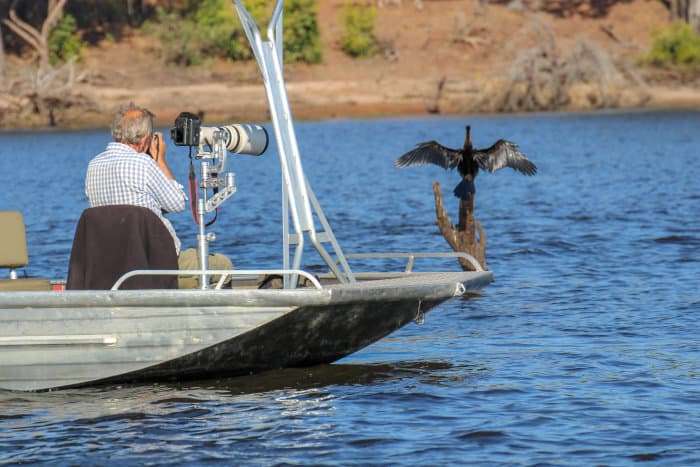
Choosing the best camera for a safari depends on several personal preferences. Hopefully, this guide has helped you decide what type of camera and accessories to take with you on your adventure in Africa.
From close-up photos of snoozing lions to capturing breathtaking sunrise views, Africa has endless photographic opportunities. So when will you book your next African safari?
Grab your travel buddies and cameras; Africa’s animals are waiting to have their picture taken.

